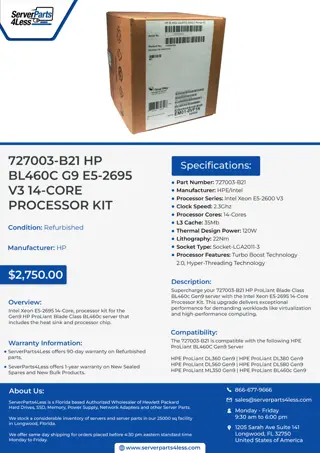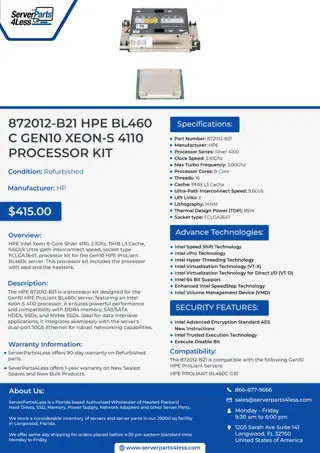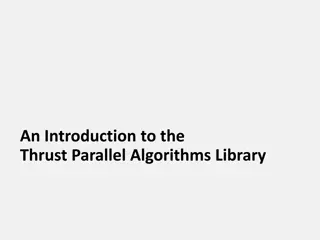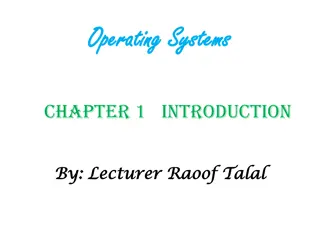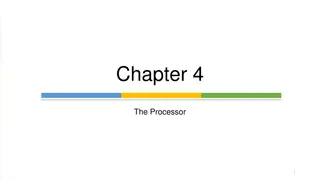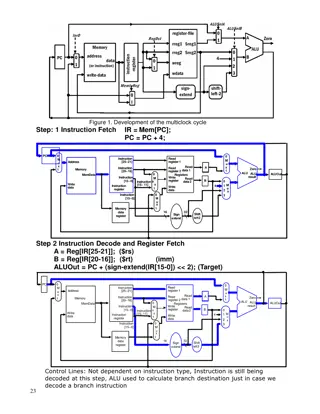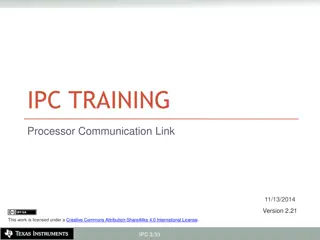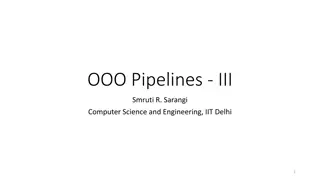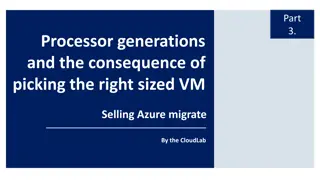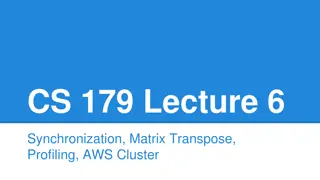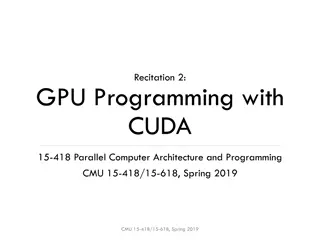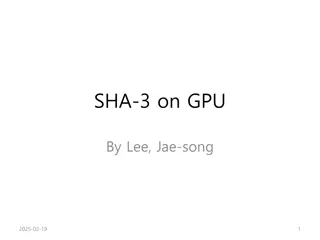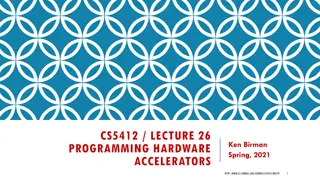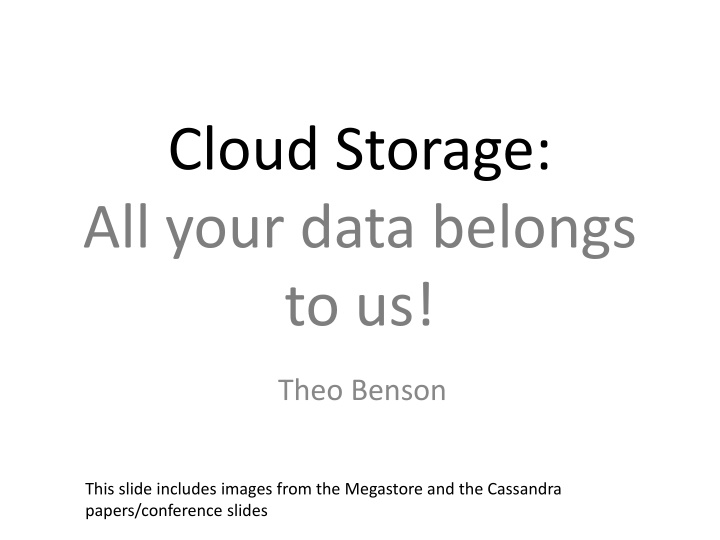
Introduction to CUDA Programming & Modern Processor Design
Delve into the intricacies of Intel's Sandy Bridge architecture, understanding core design principles and security vulnerabilities like Meltdown and Spectre. Explore the advanced concepts of memory access units, out-of-order execution, and execution units like SIMD and AVX.
Download Presentation

Please find below an Image/Link to download the presentation.
The content on the website is provided AS IS for your information and personal use only. It may not be sold, licensed, or shared on other websites without obtaining consent from the author. If you encounter any issues during the download, it is possible that the publisher has removed the file from their server.
You are allowed to download the files provided on this website for personal or commercial use, subject to the condition that they are used lawfully. All files are the property of their respective owners.
The content on the website is provided AS IS for your information and personal use only. It may not be sold, licensed, or shared on other websites without obtaining consent from the author.
E N D
Presentation Transcript
Cloud Storage: All your data belongs to us! Theo Benson This slide includes images from the Megastore and the Cassandra papers/conference slides
Outline Storage review Workload Cassandra [FB] High reads, high writes Megastore [Google] High reads, low writes
NoSQL vs. RDBMS NoSQL (Bigtable, HBase, Cassandra) Pros: Highly scalable Highly available Cons: Lean with few features put/get of keys Bad schema, query, limited API Eventual consistency loose consistency
NoSQL vs. RDBMS RDBMS (mysql, sql-server) Pro: Very mature and well understood, Strong consistency strong transactional semantics Cons: Hard to scale takes lots of time Synchronous replication may have performance and scalability issues may not have fault tolerant replication mechanisms
Motivation Existing solutions not sufficient NoSQL vs. RDBMS Goal: (Software Storage) global, Reliable, arbitrarily large in scale Reality: (hardware system) geographically confined, failure-prone, suffer limited capacity.
Building Blocks for Storage Commodity server limited resources Fails quite easily Quite Cheap Geodistributed data centers Many servers Potential for low latency
Big Data Wants Best of both worlds Highly scalable good performance! Highly available fault tolerant Very mature and well understood, Strong consistency strong transactional semantics What is good performance? (Difference in workloads) Read-heavy: search Read/Write heavy: social networks
Outline Storage review Workload Cassandra [FB] High reads, high writes Megastore [Google] High reads, low writes
Motivation online services should be highly scalable (millions of users) responsive to users highly available provide a consistent view of data (update should be visible immediately and durable) it is challenging for the underlying storage system to meet all these potential conflicting requirements
Workloads Facebook Personalized data is localized Google Same data used by everyone Delay in page load time is somewhat acceptable Delay in load is unacceptable Who will you use? MySpace? Constantly updating and reading Scope is localized High reads/high writes Index once, many infinite times High reads/low writes
Outline Storage review Workload Cassandra [FB] High reads, high writes Megastore [Google] High reads, low writes
System Architecture Partitioning: provides high throughput How data is partitioned across nodes? Load balancing Overcome failures Replication: overcome failure How data is duplicated across nodes
Partitioning and Replication 0 1 E A h(key1) Nodes are logically structured in Ring Topology. Make hash of content s value, h(k) C N=3 H(k) used to assign content to a node F Use H(k) % S to determine location in the ring h(key2) B D Lightly loaded nodes moves position to alleviate highly loaded nodes. 1/2 * Figure taken from Avinash Lakshman and Prashant Malik (authors of the paper) slides. 15
Challenges with Partition scheme Partition doesn t account for Load imbalance (some items are more popular) Key imbalance (items aren t evenly distributed to keys) How to solve this? Have a node appear in multiple locations Move lightly loaded nodes in the ring
System Architecture Partitioning: provides high throughput How data is partitioned across nodes? What do we want from a good partition algorithm? Replication: overcome failure How data is duplicated across nodes?
System Architecture Partitioning: provides high throughput How data is partitioned across nodes? What do we want from a good partition algorithm? Replication: overcome failure How data is duplicated across nodes? Challenges: Consistency issues Overhead of replication
Replication Each data item is replicated at N (replication factor) nodes. Different Replication Policies Rack Unaware replicate data at N-1 successive nodes after its coordinator Rack Aware uses Zookeeper to choose a leader which tells nodes the range they are replicas for Datacenter Aware similar to Rack Aware but leader is chosen at Datacenter level instead of Rack level. Why??
Local Persistence Relies on local file system for data persistency. Write operations happens in 2 steps Write to commit log in local disk of the node Update in-memory data structure. Read operation Looks up in-memory ds first before looking up files on disk. Uses Bloom Filter (summarization of keys in file store in memory) to avoid looking up files that do not contain the key.
Read Operation Client Result Query Cassandra Cluster Closest replica Result Read repair if digests differ Replica A Digest Query Digest Response Digest Response Replica B Replica C * Figure taken from Avinash Lakshman and Prashant Malik (authors of the paper) slides.
Failure Detection Traditional approach Heart-beats (Used by HDFS & Hadoop): binary (yes/no) If you don t get X number of heart beats then assume failure Accrual failure approach Returns a # representing probability of death X of the last Y messages were received: (X/Y)*100% Modify this # to reflect N/W congestion & server load Based on the distribution of interarrival times of update messages How would you do this?
Outline Storage review Workload Cassandra [FB] High reads, high writes Megastore [Google] High reads, low writes Storage in the Cloud HDFS in VMWare
HDFS (also GFS) A version of NoSQL Provides get/put API Optimized for high read throughput Uses replication Bad write performance!
Contribution Overcome limitations by Combining NoSQL w/ RDBMS Partition High throughput + Scale: Partition data-space into a number of distinct little DBs Replication low-latency+Fault tolerance: Replicate each little DB across the world Optimizes latency Optimize for long links synch fault tolerant log system (Paxos)
Scale Axis vs. Wide Replication Axis For scalability and throughput, based on the observation that most internet services can be suitably partitioned, Megastore partitions the database into entity groups (small sub databases), each with its replicated log stored in per replica/per datacenter Bigtable.
More Features Enriches traditional GFS/HDFS Adds rich primitives: e.g. ACID transactions, consistency Simplifies application development Biggest challenge is consistency across replicas
Consistency Recall, read and write can be simultaneous Different read consistency: trade-off time V consistency Current read Snapshot read Inconsistent read
Distributed Storage Side by Side Cassandra Facebook High throughput reads Focus on within a datacenter Megastore Google High throughput reads Low latency writes NoSQL NoSQL+RDBMS Partition throughput scales Partition throughput Scales Replication Fault tolerance Replication low latency Fault tolerance

